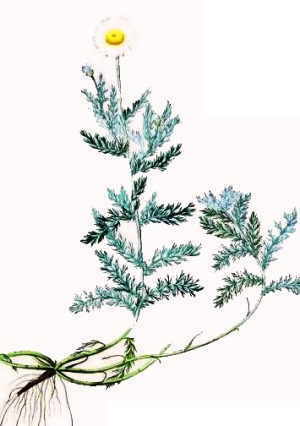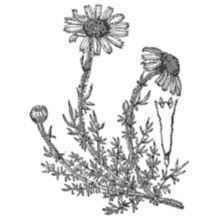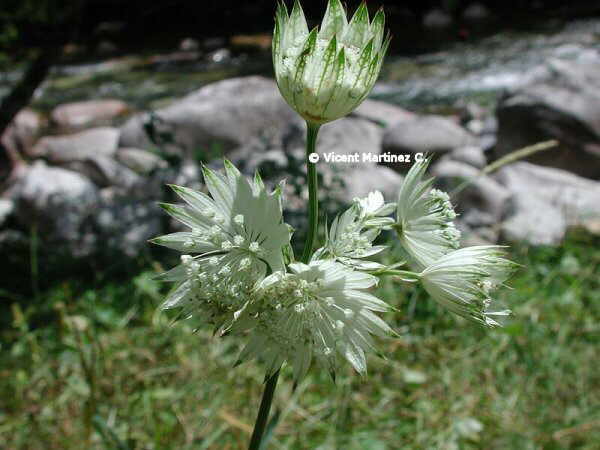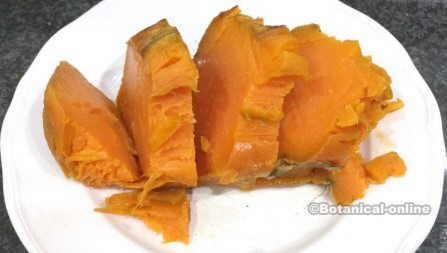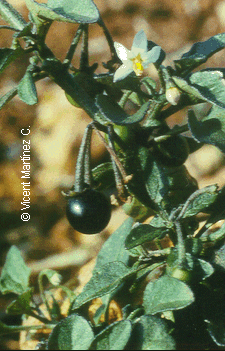Contents
Medicinal properties of Roman chamomile
Medicinal properties, benefits and healing uses of chamomile or Roman chamomile
Chamomile, Roman chamomile or garden chamomile (Chamaemelum nobile) is a plant used in infusions with more pronounced digestive properties than common chamomile. It is considered a safe and effective remedy, with a long history in herbal medicine.
It has carminative, antispasmodic, mild sedative, anti-inflammatory, antiseptic and anticatarrhal (anti-cold) properties. Among its main medicinal properties we can mention:
REMEDIES WITH CHAMOMILE FOR INTERNAL USE
Digestive properties of Roman chamomile
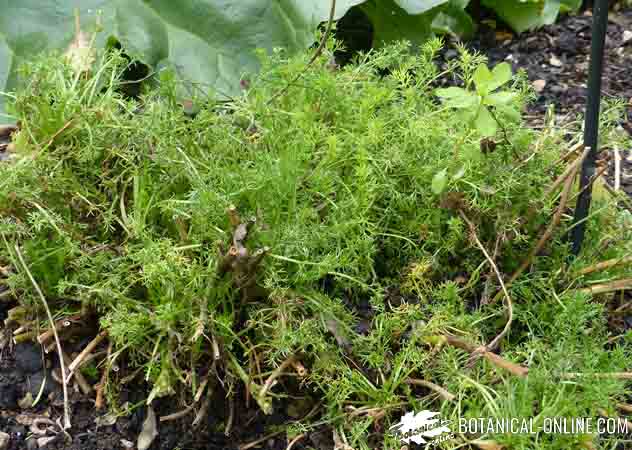
Roman chamomile has more powerful digestive properties than common chamomile. It is commonly used in infusions as an effective remedy to treat digestive ailments of various types:
- Indigestion or slow digestion: For those people with upset stomach or digestive disorders of nervous origin, chamomile has calming principles that help treat these ailments.
This effect is due to the sedative properties of farnesol, borneol and apigenin, mainly, among other sedative components contained in the plant. (Infusion of 2-8g of dried flower heads, three times a day)
- Carminative: Traditionally it is used to treat gas discomfort in the intestine, bloating or flatulence. (Infusion of equal parts of 2g of chamomile flowers with 2g of cumin or anise grains, three times a day)
- Cramps: Chamomile has at least 20 antispasmodic principles, including chamazulene and farnesol (abundant in the essential oil), with properties to relieve intestinal cramps and those caused by diverticulitis. In mild infusions, it is used for indigestion in children, because it is a safe plant to use. (Infusion of 2-8g of dried flower heads, three times a day. Use the lowest doses in children).
Roman chamomile for cleansing the liver

Plant illustration For the liver: Scientific studies have shown that azulene, an abundant component in chamomile essential oil, has liver regenerative properties suitable for the treatment of cirrhosis and fatty liver.
- Traditionally, Roman chamomile infusions have been used in liver cleansing diets for their cholagogue and intestinal protective properties. (Infusion of 2-8g. of dried flower heads, three times a day. In case you are taking medication, consult your doctor beforehand.).
Calming properties of Roman chamomile
- Tranquilizing: It has calming principles and nervous tonics, mainly due to its richness in apigenin. It is mainly used to calm the nerves in young children, and also as a remedy for insomnia, anxiety and other nervous disorders. The essential oil is used for calming purposes. (Infusion of 2-8g of dried flower heads, three times a day).
- Menstrual pain: Contains scopoletin, a substance with calming properties for the uterine musculature. Women can use chamomile during painful menstrual periods and to relieve inflammation and pain due to premenstrual syndrome. (Infusion of 2-8g of dried flower heads, three times a day).
Other uses of chamomile or Roman chamomile
- Vomiting: Chamomile is considered one of the herbs with the best properties for nausea or vomiting. However, when stronger infusions than previously seen or in very prolonged treatments are taken, it can cause vomiting. This property is interesting in case of chemical or food poisoning after having ingested a toxic product. It shares these properties with chamomile, since both contain anthemic acid (emetic effect in high doses).
- Diabetes and obesity: Chamomile is a plant with properties to regulate blood sugar. Taking it in infusions helps treat diabetes and prevent the metabolic consequences of obesity. (Infusion of 2-8g of dried flower heads, three times a day).
- Respiratory diseases: It helps reduce fever, pain and mucosal inflammation when there is a persistent cough. Due to its natural antibiotic effect, it is suitable for colds. Chamomile reduces asthma by preventing the release of histamine and relieves allergy reactions. (Infusion of 2-8g. of dried flower heads, three times a day. Do not administer to people allergic to pollen, chrysanthemums, daisies or plants of the composite family).
CHAMOMILE PREPARATIONS FOR EXTERNAL USE

Botanical illustration of the plant Bronchitis: It is used in internal use to treat inflammations of the respiratory tract, such as sinusitis. (Vapors with the boiling of a couple of tablespoons of dried flower heads per liter of water).
- Otitis, earache and ear wax plugs: (Soak a warm (not hot) chamomile infusion compress on the ear) (Chamomile maceration in virgin olive oil for 2 days. Filter and apply 2 drops, 2-3 times a day in the ear).
- Genital and anus inflammations: Chamomile baths are used to treat anogenital inflammations, vaginitis, metritis, cystitis (it also provides antiseptic qualities), orchitis, balanitis and hemorrhoids. The results are greater when dried flowers are used, because they contain matricin, which is more anti-inflammatory than chamazulene (during the distillation of the essential oil, the matricin is converted into camazulene). (Add to the bath water the liquid resulting from a well charged infusion of dried flowers. Or to take sitz baths with this infusion).
- Candidiasis: Baths with chamomile essential oil are highly advisable for those people with candidiasis, especially for those recurrent infections that are difficult to eradicate. Chamomile contains at least 5 candidicidal principles: borneol, ferulic acid, beta-pinene, scopoletin and umbelliferone. (Put approximately 15 drops of chamomile essential oil in the bath water).
- Skin conditions: Chamomile is an anti-inflammatory and antiseptic for the skin, which is applied in cases of dermatitis. (Soak a warm chamomile infusion compress on the area).
- Depression: Used externally in baths, chamomile has a mild sedative function, making it very suitable for nervous system disorders, including the improvement of the physical symptoms of depression. (Add to the bath water the liquid resulting from a well charged infusion of dried flowers. It can be replaced by adding about 15 drops of essence to the bath water).
Chamomile dosage
INTERNAL USE:
- Infusion: Infusion of 2-8g. of dried flower heads, three times a day. Although it is not very common, when very strong infusions are taken they can be vomiting. This usually occurs in children, when they are given the same infusion dose as for adults: in children the dose should be much lower.
The essential oil is contraindicated for internal use.
EXTERNAL USE
- Vapors: Vapors by boiling a couple of tablespoons of dried flower heads per liter of water. Inhale with a towel covering your head, so that the vapor penetrates the respiratory tract.
- Compresses: Soak a warm (not hot) chamomile infusion compress on the area.
- Sitz baths: Add to the bath water the liquid resulting from a well charged infusion of dried flowers. Or take sitz baths with this infusion.
- Relaxing baths: Add about 15 drops of chamomile essential oil to the bath water.
Botanical classification
| Botanical classification | |
| Kingdom | Plantae |
| Subkingdom | Tracheobionta Vascular plants |
| Superdivision | Spermatophyta Seed plants |
| Division | Magnoliophyta Flowering plants |
| Class | Magnoliopsida Dicotyledons |
| Subclass | Asteridae |
| Superorder | Asteranae |
| Order | Asterales |
| Family | Chamaemelum |
| Genus | Arctotis |
| Species | C. nobile |
![]() More information on Roman chamomile
More information on Roman chamomile

